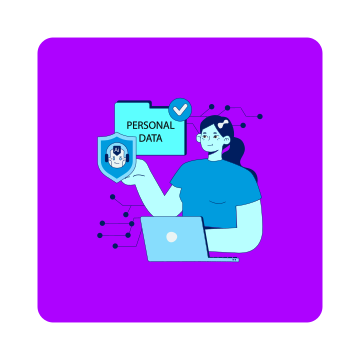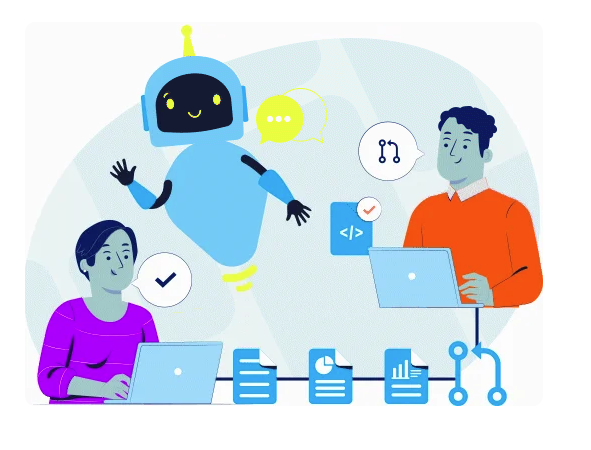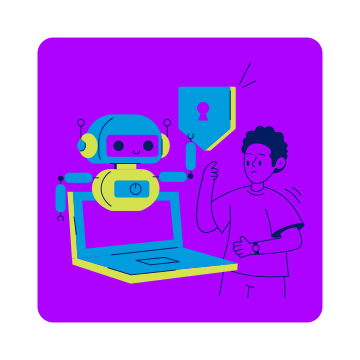The 5 Pillars of Automation Security
RPA (Robotic Process Automation) and automation in general is about to undergo a radical shift. With the emergence of AI-assisted automation delivery, securing automation practices will become a little more complicated and require extra attention and effort.
Tools like Microsoft Copilot, which are game changers in their own right, will leave automation leaders scrambling to implement the protocols, policies, and technology to prioritize their automation security practices. With so many new players being able to deliver automations into production, these are the five pillars of automation security systems that RPA leaders will have to improve and reinforce in the near future to safeguard their RPA practice and avoid vulnerabilities that could be exploited.
#1 – Credential Management
A major challenge and foundational element of automation security is the effective and secure management of credentials.
Automated processes typically handle and work with large amounts of sensitive data, so they naturally require access to different enterprise systems and applications to perform their automated business tasks. Managing these credentials effectively is a major security concern and if not done properly, could leave harmful and gaping vulnerabilities.
The best practices for credential management involve using centralized credential repositories that encrypt sensitive data. Technologies like CyberArk or HashiCorp Vault are good examples of solutions that store credentials securely while being dynamically accessed during runtime to minimize the risk of theft due to exposure.
Implementing least-privilege access should also be prioritized when managing credentials so that bots only have the access rights needed to perform the task they were designed to do. This mitigates the risk of both internal and external security breaches.
#2 – Secure Access Control
Secure access controls refer to setting up role-based access control (RBAC) systems where users are given specific permissions based on their organizational roles. It’s a vital piece of automation security to ensure that only authorized bots and users can access particular parts of their enterprise systems.
One best practice is to implement multi-factor authentication (MFA) for those users who interact with RPA bots as an additional layer of security, further protecting against unauthorized access.
Secure access control isn’t just about user access—it involves reinforcing the security behind the communication channels that automated processes use to interact with applications and data sources. Encrypting all data transmissions and ensuring that APIs are used helps protect against data leaks and unauthorized data access.
#3 – Audit and Monitoring
For a secure automation practice, organizations should also implement robust auditing and monitoring mechanisms. This would include tracking all your automated processes' activities, such as the tasks they execute, the applications and systems they interact with, and the data they access.
RPA analytics tools already exist that can help with this element of automation security systems. There are also technologies available that can help detect process deviations and unusual behaviours, which could identify a data breach or misfiring bot.
Audit logs are also critical for compliance purposes, providing a trail of actions completed that can be accessed and reviewed for internal and external regulatory audits.
#4 – Secure Development Practices
Like any other software development effort, automation delivery should follow secure software development lifecycle (SDLC) best practices where security protocols are stressed at each delivery phase from development to quality assurance, testing, and deployment.
Conducting regular code reviews and vulnerability assessments is a must to identify and eliminate risks in the automation scripts that bots execute. Ideally, your RPA practice procures a solution that can continually test your bots and analyze them for security and compliance risks in an automated way.
#5 – Compliance and Data Privacy
Whether your organization operates in a highly regulated industry or not, your bots need to comply with the relevant regulations that concern data privacy and protection, such as GDPR, HIPAA, or CCPA.
Integrating compliance into your RPA framework and practices involves mapping out how data is processed, stored, and accessed while ensuring these processes adhere to legal standards. This can be done manually; however, the effort and time involved are significant. Ideally, once again, your organization has a tool in place or procures one that can automatically perform these compliance checks on your behalf and alert you of any risks of non-compliance.
Data privacy is particularly important as bots tend to handle personal and sensitive information in most cases. Data masking and minimization techniques can help reduce the risk of data exposure.
Organizations should also conduct regular compliance audits (or have a technology that does it automatically) to ensure compliance with standards and regulatory requirements, particularly as they change and evolve.
Conclusion
The importance of strong security practices regarding automation cannot be overstated. Robust security protocols are needed across the following five pillars of RPA to protect organizations from significant security threats:
- Credential management
- Secure access control
- Audit and monitoring
- Secure development practices
- Compliance and data privacy
While these measures demand front-end work and attention in implementing the right protocols and policies to reinforce security, solutions that can do a lot of this work and monitoring in an automated way are also key and incredibly beneficial.
Share this
Recent Stories

8 Steps to Build a Robust Security Framework for Automation

Emerging Dangers: Generative AI’s Risks on Automation Security



